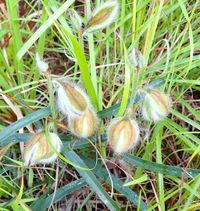In a significant botanical discovery, Central University announced on April 28, 2025, that the endangered plant species Gakutannukimame has been found in Ishigaki Island, Okinawa, marking the first sighting of this plant in Japan in nearly 50 years. The research was conducted by a team from Central University, the Nature Environment Center, and Tokyo University of Agriculture, who were surveying grasslands where cattle graze.
The research team has been systematically surveying grassland environments on Ishigaki Island and nearby Iriomote Island since 2024. During their extensive fieldwork, they collected and databased over 14,000 specimens from approximately 800 different plant species. The confirmation of the Gakutannukimame marks the first identification of the species in 47 years, according to the findings published online in the English journal TROOPICS of the Ecological Society of Japan.
Gakutannukimame is a perennial grass that thrives in tropical grasslands, with its distribution ranging from Africa to Asia and northern Australia. Notably, Ishigaki and Iriomote Islands represent the northernmost limit of its habitat. The plant typically grows to about 20 centimeters in height, and this recent discovery revealed dozens of plants within an area of several tens of square meters on Ishigaki Island.
Kazuhide Nakajima, a guest researcher at Central University’s Faculty of Science and Engineering Research Institute, highlighted the precarious state of grasslands in the region. “Grasslands generally disappear due to development, grazing, and abandonment, and rare grasses are eaten up due to overgrazing,” he stated. However, the grassland where the Gakutannukimame was found was in surprisingly good condition, which Nakajima described as a miraculous occurrence.
He further emphasized the importance of human intervention in maintaining these environments, saying, “If left unattended, grasslands will soon turn into forests. It is crucial for people to manage these areas appropriately to preserve valuable grasses.” This sentiment underscores the broader environmental concerns surrounding the preservation of such ecosystems, which are often at risk due to agricultural practices and urban development.
The discovery of the Gakutannukimame not only represents a rare botanical find but also serves as a reminder of the delicate balance between human activity and nature. Grasslands, which are vital for biodiversity, face threats from various fronts, including overgrazing, which leads to the depletion of rare plant species.
As the research continues, the team plans to further investigate the ecological dynamics of these grasslands, with hopes of uncovering more about the unique flora that inhabit these regions. The findings from this study could play a pivotal role in informing conservation efforts, as they provide critical data about the status of endangered species and the health of their habitats.
In light of this discovery, conservationists are calling for increased awareness and action to protect these grassland ecosystems. The Gakutannukimame serves as a symbol of the rich biodiversity that can still be found in Japan, despite the ongoing threats posed by modern development.
The importance of such discoveries cannot be overstated, as they not only contribute to the scientific understanding of plant species but also highlight the need for sustainable practices that ensure the survival of endangered flora. As urbanization continues to encroach upon natural habitats, the findings from Central University’s research may inspire efforts to prioritize conservation and responsible land management.
Ultimately, the re-emergence of the Gakutannukimame in Ishigaki Island is a beacon of hope for environmentalists and researchers alike, showcasing that with concerted efforts and proper management, it is possible to preserve and protect our planet's rich biodiversity for future generations.




